Announcing the opening of a new facility designed by world-renowned architect David Chipperfield
〈Chapel and Visitor Centre〉
Our hope was to create a new facility as a place of prayer where people could harmoniously come together regardless of religion or race. The construction project for the Inagawa Cemetery initiated in collaboration with world-renowned architect David Chipperfield who had supported our intentions, is now finally celebrating its completion. After a design and construction period of four and a half years, we are pleased to introduce the new chapel and visitor centre opened in May 2017.
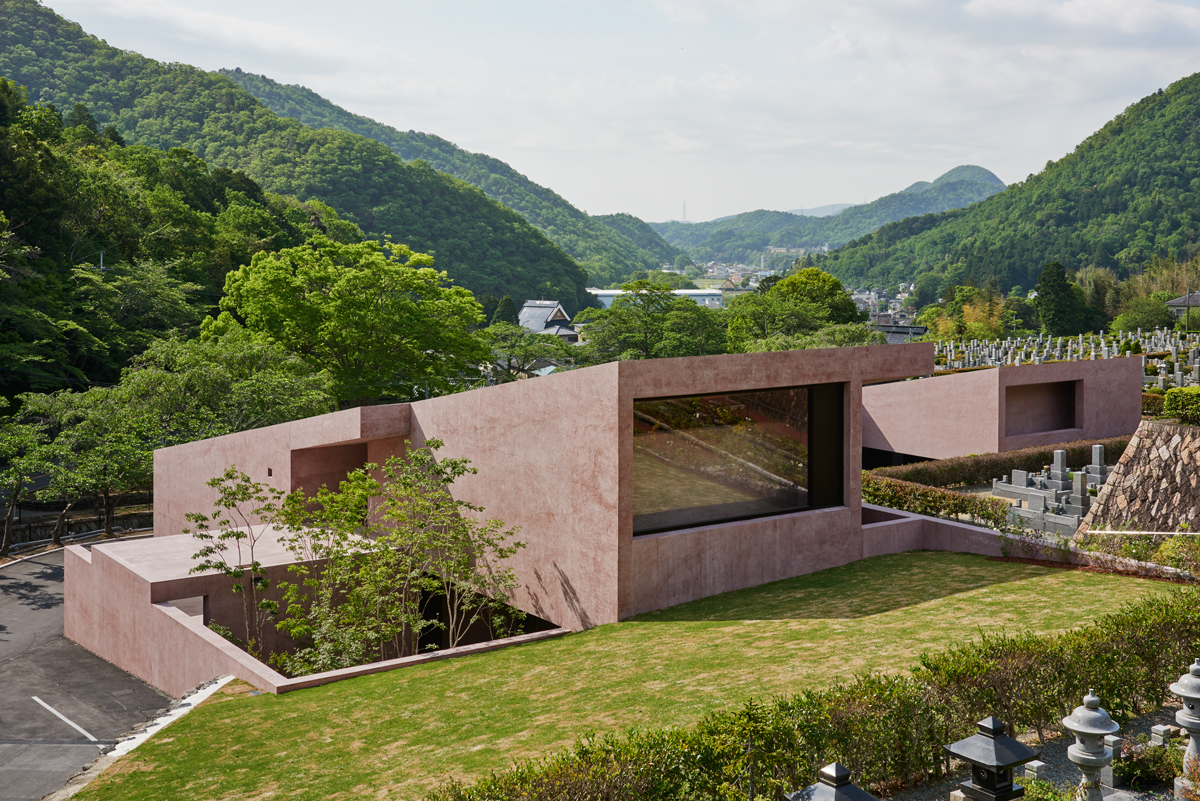
Note from the architect
Inagawa Cemetery is located on a steep site in the Hokusetsu Mountain Range of the Hyogo prefecture, approximately 40 kilometres north of Osaka. The cemetery is laid out across terraces and bisected by a monumental flight of steps leading up to a shrine at the highest point - an axis that orients the whole project.
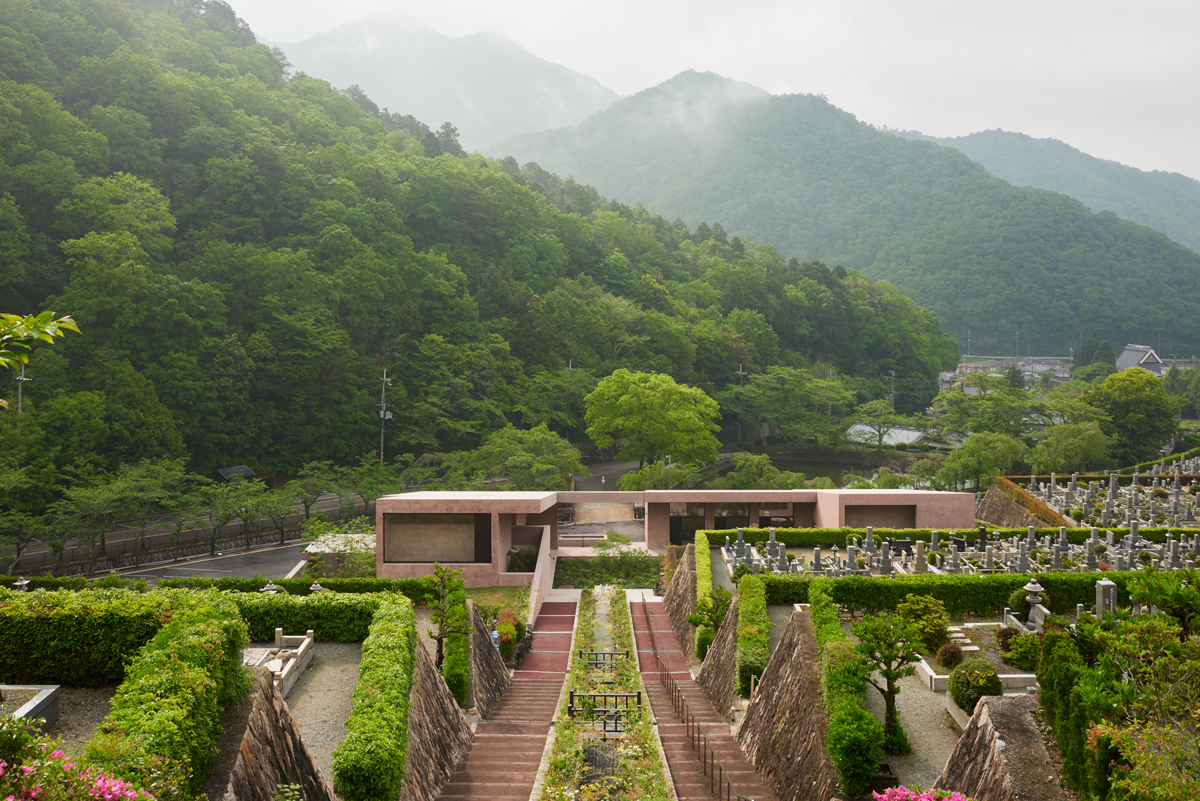
The visitor centre and chapel are designed as a marked threshold between the outer world and a quieter space within for contemplation. Aligned with the central staircase, and as a counterpoint to the shrine, the visitor and chapel spaces are gathered around a courtyard. Visitors approach this space from an exterior platform that leads to a wide, framed central opening in the stepped south-east façade.

The programme is formally under a single, sloping roof plane, following the view line from the entrance up to the shrine. The rooms of the visitor centre open onto the courtyard garden while the secluded chapel remains separate. It can be reached via a discrete corridor, directly accessed from the outside or up a gentle ramp from the garden. An unadorned and quiet room with minimal heating and artificial lighting offers a non-denominational contemplative space, pure in its form. Relying on indirect sunlight from the gardens on either side, the chapel visitor finds seclusion and their focus is drawn to the essential rhythms of time through the natural indicators of daylight fluctuation and seasonal foliage changes. The planting of all the gardens is inspired by the palettes and textures of Japanese meadows and woodlands and a selection of grasses, shrubs and wildflowers are carefully juxtaposed.
On the diagonally opposite corner of the courtyard is the visitor centre. Two large rooms at the lower end of the roof provide for family gatherings and commemorations. The visitors lounge offers an informal area for resting and eating. The memorial room, which can be separated into three smaller rooms by pleated curtains made with washi paper on fabric, offers space for formal feasts after rituals.
The floors, walls and roof are formed as pure building elements and poured from the same earth-like red coloured concrete – honed for internal floors and ground and sandblasted for walkway walls and soffits – giving the overall structure a monolithic appearance. A range of furniture designed specifically for the project consisting of simple, informal painted wooden chairs, benches, tables can be re-arranged depending on the occasion.
Following the axial link between the two ends of site, a rill carries water down the middle of the staircase from the top of the mountain directly towards the building. As it approaches the lower part of the staircase near the chapel, the running water slows and pools as it collects into a trough, then is diverted through a new underground channel under the site to the nearby canal.
David Chipperfield, May 2017
David Chipperfield
A British architect. He established David Chipperfield Architects in 1985, which has offices in London, Berlin, Milan, and Shanghai.
https://davidchipperfield.com
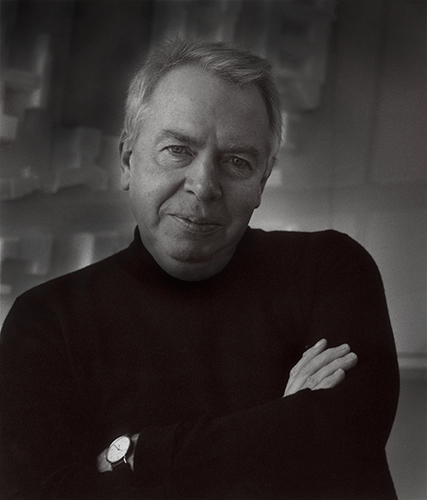

Photo by Ingrid von Kruse.
“I see this chapel as a contemporary sanctuary that transcends religious denomination.”
Hideyuki Osawa
Chief Director of the Eternalica Foundation
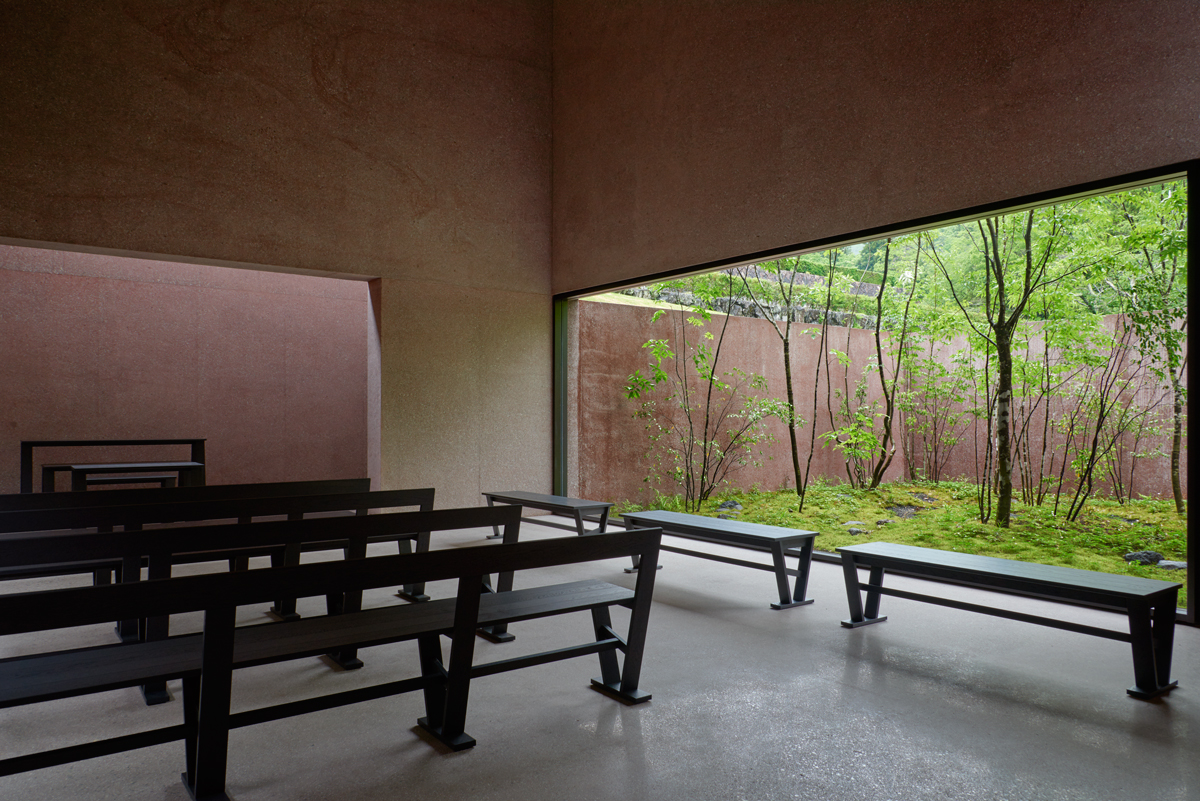
A place to pray and rest
In making a building for Inagawa Cemetery, we set out to create a place where anyone, regardless of religious or ethnic background, could pray, and a structure with the emotionally moving and calming qualities befitting the timelessness of a cemetery. David Chipperfield strongly endorsed the plan, and through our total and mutual respect for each other, we have attained the ultimate joy of collaborating as a ‘trinity’ of benefactor, architect and builder, without compromising in any way. These efforts have resulted in a splendid work of architecture that blends in perfectly with the surrounding landscape.
I see this chapel as a contemporary sanctuary that transcends religious denomination. Kind to visitors and a home to gods and Buddhas, without any particular religious affiliation, this is a place that allows us to rest. The building is unlike any other in the past, and as my friend, the artist, Thomas Struth, aptly remarked, “Small but big at the same time.” With its exquisite balance, it is also a place that is gentle yet strong, sacred yet intimate.
After the birth of the building, it is our job to cultivate its reason for being as those entrusted with the responsibility of raising it. As people from all over the world visit the site, it is our hope that the building will serve as a place of prayer that transcends religious and ethnic differences for generations to come, and that this philosophy will spread like ripples in the water.
Hideyuki Osawa
Chief Director of the Eternalica Foundation
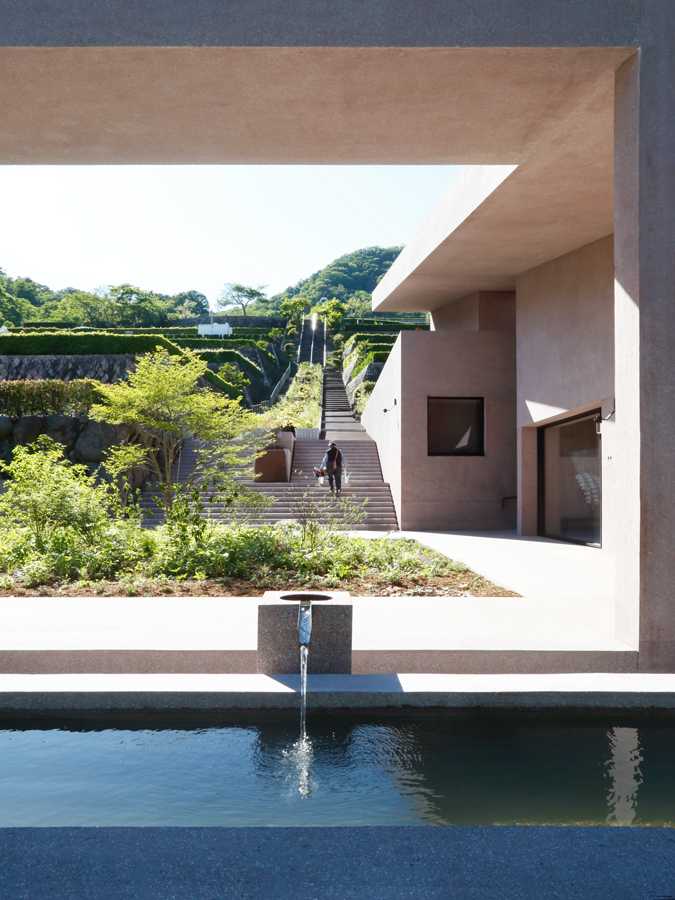
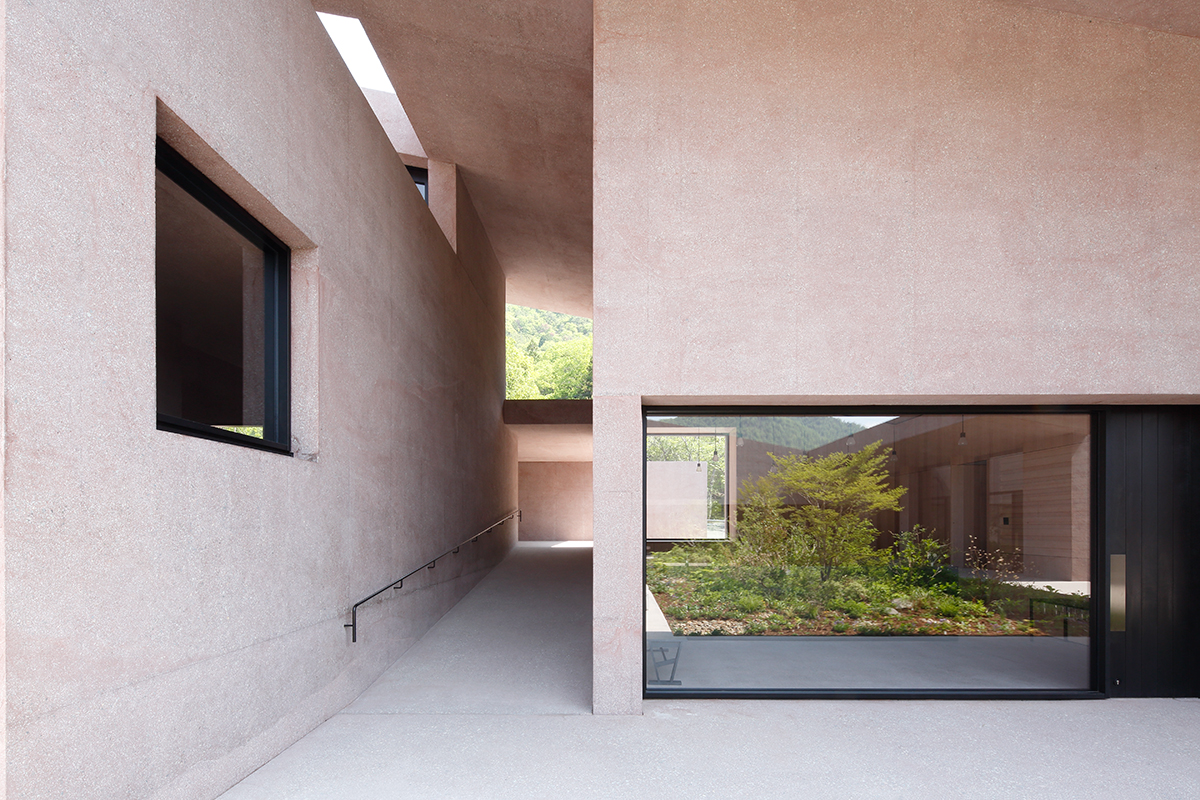
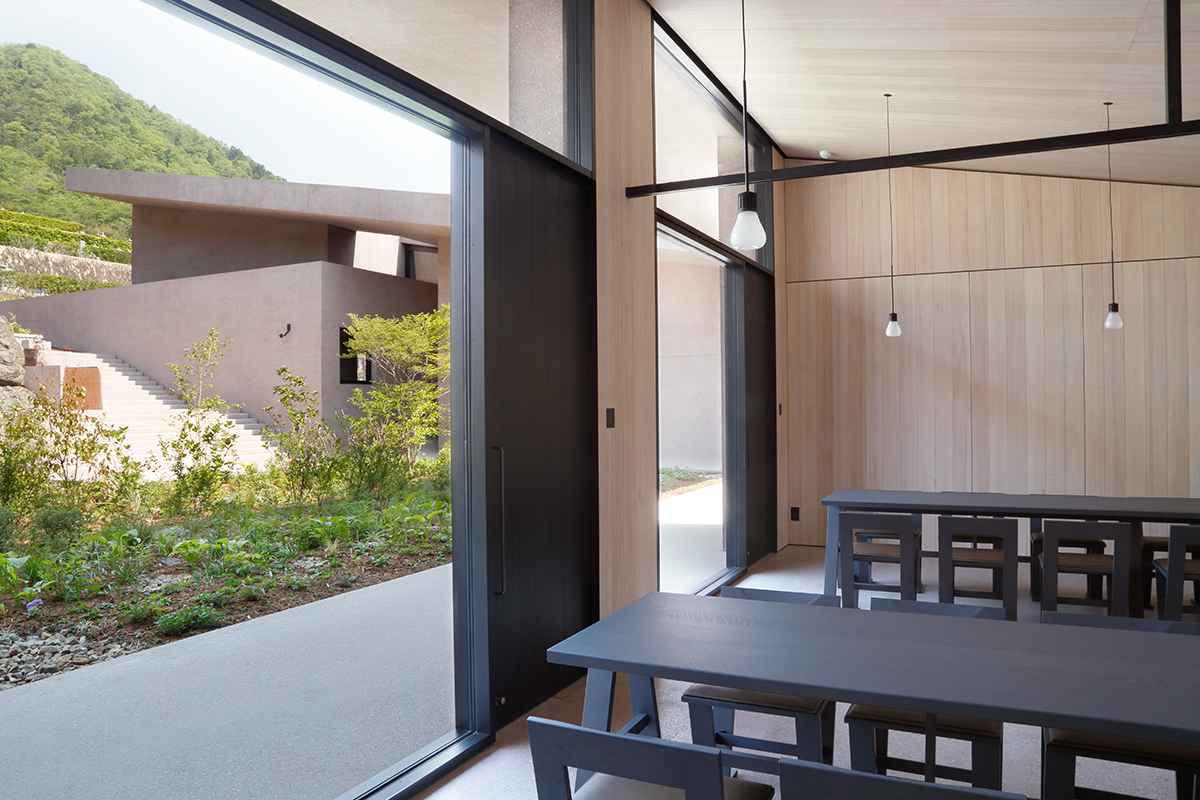
Photos by Yuna Yagi
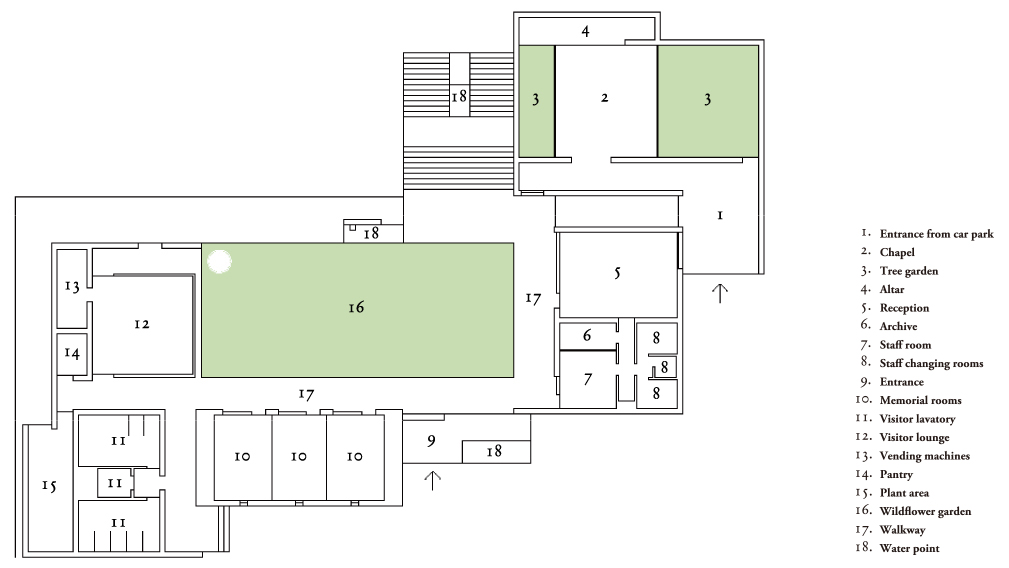
Credits and building outline
| Architect | David Chipperfield Architects |
| Client | Eternalica Foundation |
| Project Manager | Naoko Kawamura |
| Associate Architect | Key Operation Inc. / Architects |
| Landscape Architect | Marcia Iwatate + Kamimura Landscape Architects |
| LightingDesign | Viabizzuno Srl |
| Structural Consultant | Jun Sato Structural Engineering |
| MEP Consultant | ES Associates |
| Contractor & Executive Architect | Obayashi Corporation |
| Signage | Hayashi Takuma Design Office |
| Furniture | Cassina ixc. Ltd. |
| Textile | NUNO Corporation |
| Total area for cemetery | 144,500㎡ |
| Site area | 2,100 ㎡ Building area 630㎡ Total floor area 4906㎡ |
| Material and finishing | Honed and sandblasted red- coloured concrete across walls, roof and walkways, with black- stained oak doors and blackened steel windows; internal walls and ceilings in white-stained Hemlock boards. |
| Design period | January 2013 – February 2016 |
| Construction period | March 2016 – April 2017 |
Scroll →
About cancellation of building information
We have guided many building visitors since the construction was completed, but due to the prevention of the spread of new coronavirus infection, we will cancel the building guidance for the time being. Please cooperate with the tour from outside the building. Please contact the cemetery management office for details as they may change depending on the situation.
However, this does not apply to prior visits by customers who are considering legal matters or those who are considering new acquisition of a grave.
Phone: 072-769-0543
Reception hours: 9:00 - 16:00 *Closed on Wednesdays



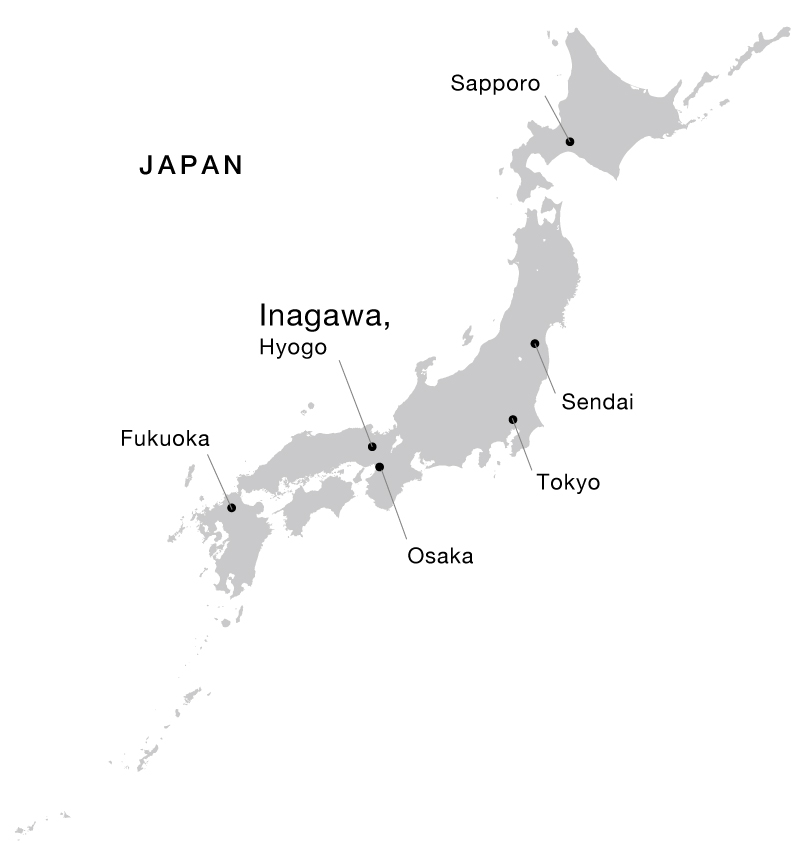
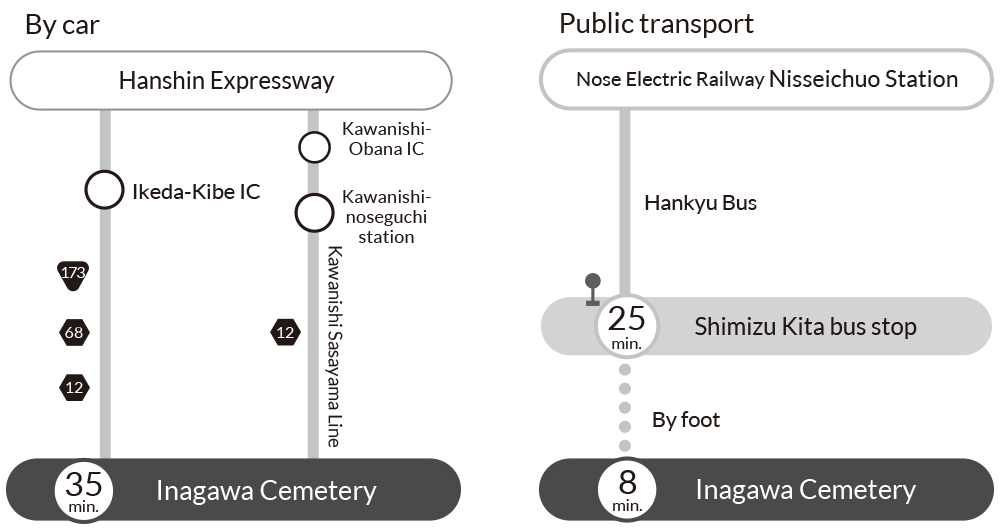
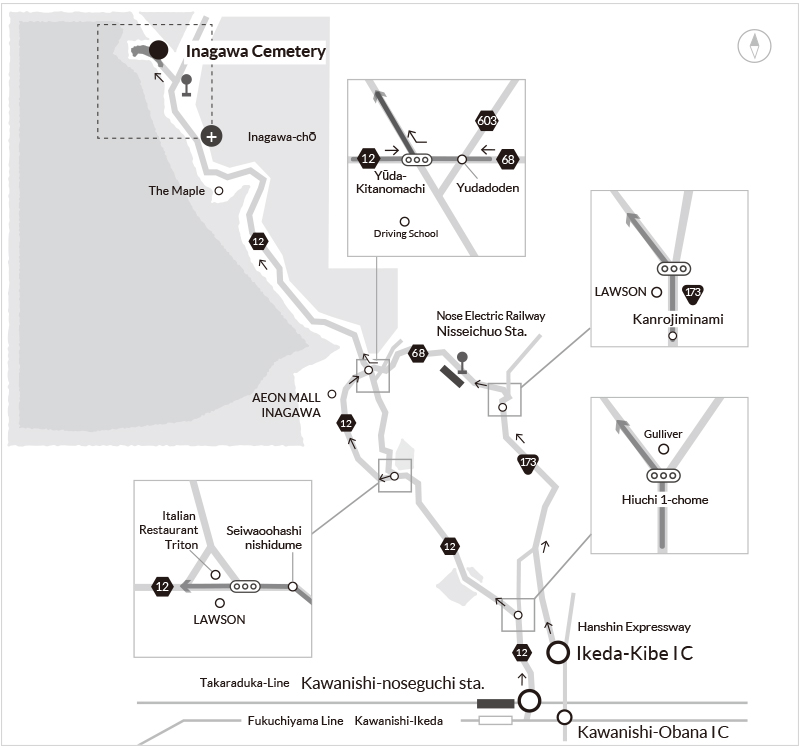 Wide-area map
Wide-area map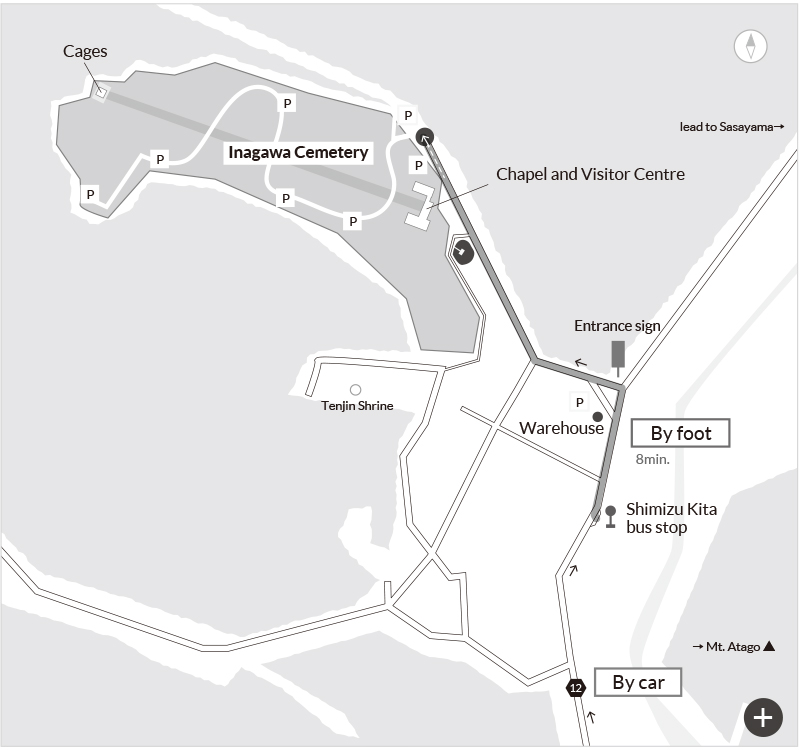 Datailed map
Datailed map